knowledge sharing
knowledge sharing LIST
-

Sodium Thiosulphate
Read more -

Sodium dichloroisocyanurate (SDIC) 55% Dihydrate 20g tablet
Read more -

Calcium hypochlorite 65% granular 10-30 mesh
Read more -

Trisodium Phosphate/TSP
Read more -

Aluminium Sulfate Flakes
Read more -

HEDP/Etidronic Acid powder
Read more -
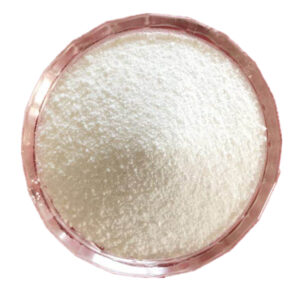
Sodium Carbonate
Read more -

Trichloroisocyanuric Acid (TCCA)TCCA Granular 5-8mesh
Read more -

Sodium dichloroisocyanurate (SDIC) 56% Powder
Read more -

Sodium dichloroisocyanurate (SDIC)60% granular 20-40mesh
Read more -

Sodium dichloroisocyanurate (SDIC) 60% Powder
Read more -

Sodium Chlorite Liquid
Read more -

Ethylene Diamine Tetraacetic Acid-4NA/ EDTA-4NA
Read more -

Calcium hypochlorite 65% Tablet 200g tablet
Read more -

Sodium dichloroisocyanurate (SDIC) 55% Dihydrate 200g tablet
Read more -

BKC/Benzalkonium Chloride 50% ,80% liquid
Read more -

ATMP/Amino Trimethylene Phosphonic Acid powder
Read more -

Cyanuric Acid/Tricyanic Acid
Read more -
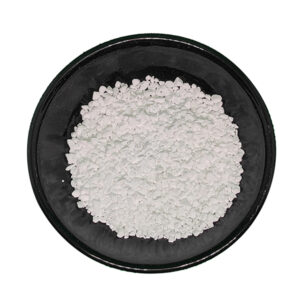
Sodium dichloroisocyanurate (SDIC)60% granular 8-30mesh
Read more -

Sodium dichloroisocyanurate (SDIC) 45% 56% 60% 1g,2g,2.7g,3g,3.3g,3.4g tablet
Read more -

Polyaluminium Chloride(PAC)
Read more -

Trichloroisocyanuric Acid (TCCA)TCCA 200 g Multifunctional tablet
Read more -

Aluminium Sulfate Granular
Read more -

Calcium hypochlorite 65%70% Tablet 200g tablet
Read more -

Trichloroisocyanuric Acid (TCCA)TCCA Tablet 20gtablet
Read more -

Sodium dichloroisocyanurate (SDIC) 55% Dihydrate granular 20-40 mesh
Read more -

HEDP/Etidronic Acid Liquid
Read more -

Sodium dichloroisocyanurate (SDIC) 60% 20g tablet
Read more -

SHMP/Sodium Hexametaphosphate
Read more -

Sodium dichloroisocyanurate SDIC 3.3g effervescent tablet
Read more -

Ethylene Diamine Tetraacetic Acid/ EDTA
Read more -

Calcium hypochlorite 70% granular 10-30 mesh
Read more -

Trichloroisocyanuric Acid (TCCA)90% Granular 8-30mesh
Read more -
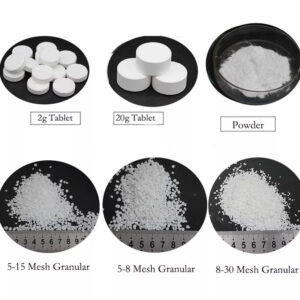
Sodium dichloroisocyanurate (SDIC) SDIC 56% 20g tablet
Read more -

Sodium polyphosphate/Siliphos Ball
Read more -

Aluminium Sulfate Powder
Read more -

BKC/Benzalkonium Chloride 80%,95%, 99% powder
Read more -

ATMP/Amino Trimethylene Phosphonic Acid liquid
Read more -

Calcium hypochlorite 65% 70% granular 10-30 mesh
Read more -

Sodium Hypochlorite
Read more -
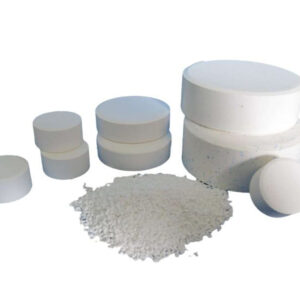
Trichloroisocyanuric Acid (TCCA)TCCA Tablet 200g tablet
Read more -

Sodium dichloroisocyanurate (SDIC)56% granular 20-40mesh
Read more -

Trichloroisocyanuric Acid (TCCA)90% Powder
Read more -

Sodium dichloroisocyanurate (SDIC) 56% granular 8-30mesh
Read more -
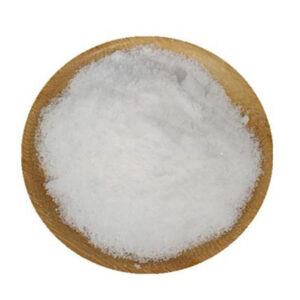
Sodium Chlorite Powder
Read more -

Ethylene Diamine Tetraacetic Acid-2NA/ EDTA-2NA
Read more -

Calcium hypochlorite 70% Tablet 200g tablet
Read more -
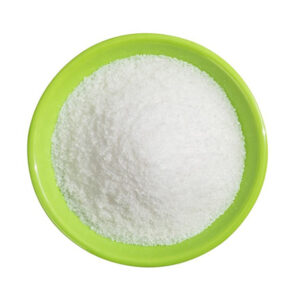
Polyacrylamide (PAM)
Read more
Water Treatment Chemicals
ENVO Industry Chemicals
Cost Effective Quality
Made in CHINA
ISO9001 Accredited
ISO14001 Accredited
Established Brand
Own Label Option
Where are they used?
Manufacturing (all types)
Food Processing
Dairies
Drinks Manufacture
Building Services
Hotels
Hospitals
Drinking Water
Waste Water
Spas & Leisure Pools
Legionella Control
Comprehensive Range
Boiler Water
Cooling Water
Closed Systems
RO Chemicals
Corrosion Inhibitors
Antiscalants
Disinfectants & Biocides
Descalers & Chemical Cleaners
Chlorine Dioxide
Effluent Chemicals
Problem-solving Chemicals
Water is not only vital to life but also essential to many industrial and commercial processes for heating, cooling and washing. Without effective water treatment these processes can lose efficiency, fail and become a health hazard.
• Scale formation can cause loss of efficiency, increased operating
costs and dangerous overheating.
• Corrosion can cause costly failure and loss of flow.
• Microbial activity can cause fouling, product spoilage and disease.
Over the years we’ve developed a comprehensive range of cost effective water treatment chemicals to solve all your water related problems. Our industrial water treatment chemicals keep water systems operating safely and efficiently, keeping production processes going and save our customers money.
Quality Assured
All our products are manufactured in our CHINA factory to the highest standards and go through a rigorous Quality Control process. Our manufacturing facilities are ISO 9001 accredited and have ISO14001 accreditation as part of our commitment to reduce our impact on the environment.
Technical Support
Where some may talk about technical support we actually provide it. We have our own in-house UKAS accredited laboratory for icrobiological and chemical analysis – for product support. Our technical team are industry experts with years of hands-on experience and their help and advice is only a phone call or email away.
Definition and development history of water treatment chemicals
Definition and classification of water treatment chemicals
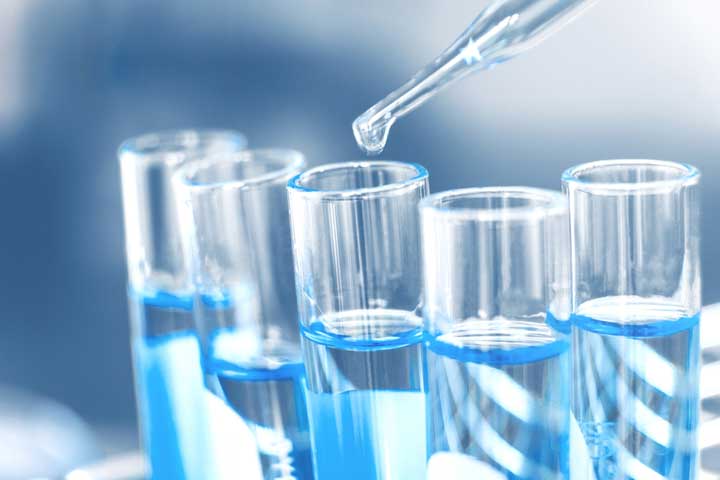
Water treatment chemicals refer to chemicals used in industrial water treatment . Water treatment chemicals , also known as water treatment agents, mainly refer to chemicals used in industrial water treatment, including cooling water, boiler water, sewage, oil field water and other industrial water treatment chemicals. Scale inhibitor, corrosion inhibitor, dispersant, bactericide and algaecide, defoamer, flocculant, oxygen scavenger, sludge conditioner, chelating agent, etc. Coagulants and flocculants for raw water and sewage treatment are also included in water treatment chemicals. In addition, activated carbon and ion exchange resins are also important water treatment chemicals.
1. Water treatment agents include the following three types of products:
(a) General chemicals for water treatment: originally refers to inorganic chemical products used for water treatment, such as aluminum sulfate, sodium hydroxide, sulfuric acid, ferrous sulfate, ferric chloride solution, etc.
(b) Special chemicals for water treatment: ion exchange resins and organic water treatment chemicals including activated carbon, inorganic polyaluminum chloride organic flocculants, lime, alum, etc., including activated carbon, ion exchange resins and organic polymeric flocculants (such as polyacrylamide, potassium acid, polyamine and polyquaternium) etc.
(c) Water treatment formulation chemicals: including corrosion inhibitors, scale inhibitors, bactericides and combustion aids, etc.
2. Water treatment chemicals have strong transfer properties. Water treatment chemicals can be divided into two categories according to the purpose of application.
(a) Purified water: pH regulator, redox agent, adsorbent, activated carbon and ion exchange resin, coagulant and flocculant, etc.
(b) Special industrial purposes: corrosion inhibitor, scale inhibitor and dispersant, bactericidal and algaecide, softener, etc.
3.The compound water treatment agent is the main application form, which has the advantages of multi-function and convenient application.
4.Development history of water treatment chemicals:
In ancient times, human beings at that time did not have advanced water treatment technology. In order to reduce the water transmission of diseases, they used simple grid interception and natural sedimentation methods for water treatment. Later, after years of observation and summary, they also discovered a method of filtering out fine suspended solids with sand, and then a chemical coagulation pretreatment appeared. With the continuous progress of human civilization, the waste generated by human beings and the destruction of the environment have caused serious pollution of water resources. When various infectious diseases are transmitted through water, causing many people to get sick or die, it is only when people find out how important water treatment is. It is precisely because of this that people gradually began to study water treatment technology.
Since the end of the 19th century, industrial technology has developed by leaps and bounds, and the production of industrial sewage has doubled year by year. Moreover, the rivers and lakes of the industrial powers at that time were also seriously polluted and gradually became a social hazard. Typical examples include the near-death of fish in the Thames River in the United Kingdom, the death of a large number of organisms in the Mississippi River in the United States, and the contamination of Minamata Bay in Kumamoto Prefecture, Japan with methylmercury, which has caused the occurrence of bone pain in nearby residents. It has been found that the simple chemical and physical methods and the difficulty in treating these sewages have led to the development of new water treatment technologies. Scientists from all over the world have begun to study water treatment methods. The earliest is the sewage aeration test, then the biofilm method, then the artificial biological treatment method, and now the targeted ion exchange method, electrochemical method and other high-tech methods.
In the 1990s, with the idea of sustainable development put forward, many countries also began to use the method of systems engineering. Taking economic development and environmental protection into consideration, water treatment is not only to treat the formed sewage, but to control it from the source. Due to the rapid economic development in recent decades, it has been found that the traditional water supply treatment process has been difficult to meet the water demand of the society, so biotechnology has begun to be applied to the water supply process. Not only that, with the emergence of water resources crisis, the process of wastewater reuse has also become a point of concern. In order to improve water quality and improve the current environment, sewage treatment technologies such as land irrigation and oxidation ponds based on ecological principles have also been developed.
Water treatment chemicals, also known as water treatment agents, were also called water quality stabilizers in the 1970s, mainly referring to chemicals used in industrial water treatment, including scale inhibitors for industrial water treatment such as cooling water, boiler water and oil field water. , corrosion inhibitor, dispersant, bactericidal and algaecide, defoamer, flocculant, oxygen scavenger, sludge conditioner and chelating agent, etc. Coagulants and flocculants for raw water and sewage treatment are also included in water treatment chemicals. In addition, activated carbon and ion exchange resins are also important water treatment chemicals.
Worldwide sales of water treatment agents in 1992 were US$2.837 billion (excluding activated carbon, ion exchange resins, combustion additives and general inorganic coagulants), of which US$1.479 billion, Western Europe US$483 million, and Japan US$575 million. According to statistics, there are more than 500 companies engaged in the production and service of water treatment agents in the United States, and they mainly focus on technical services. The Western European water treatment market is mainly controlled by American companies, and there are only a few water treatment companies in Western European countries. Organic polymer flocculants in Western Europe, especially polyacrylamide products, have certain advantages. In addition, the production capacity of powder products in the United States is insufficient, and most of their markets are occupied by Western European companies. In addition, several Western European companies have also taken Korea from Japanese manufacturers. Fresh and Middle Eastern parts of the market. There are also many companies engaged in water treatment agent production and technical services in Japan, among which there are more than 20 companies related to cooling water treatment agent manufacturing and technical services.
China’s water treatment technology started in the 1950s, and inorganic phosphates have been used as water treatment agents while introducing chemical technology from the former Soviet Union. In the 1970s, when the large chemical fertilizer plant was introduced, it began to introduce water treatment technology, mainly the technology of the American Baez Company. In the early 1980s, it introduced the phosphate ester water treatment technology from the American Nalco Company and the T-225 alkaline water from the Japanese Kurita Company. Process recipes.
On this basis, China Central Bank has developed localized water treatment technology and water treatment agent. The sewage treatment technology started from the primary treatment in the 1960s, and most of them adopted the secondary treatment. The flocculant and coagulant started in the 1950s production, but it was only used in industrial production in the 1960s, and many new pharmaceuticals were developed in the 1980s.
The production of organic flocculants in China is mainly based on polyacrylamide series products, the varieties are mainly non-ionic and anionic, and there are few cationic products. Among them,
Envo Industrial Co., Ltd. have larger output and more varieties.
By 2000, in addition to some breakthroughs in the preparation technology of various water treatment agents, the varieties that have been produced and applied are still dominant. The average annual growth rate of various varieties will be around 5%-6%.
5.significance of water treatment chemicals

Water treatment is of great significance for improving water quality, preventing scaling, corrosion, bacteria and algae growth and environmental pollution, ensuring efficient, safe and long-term operation of industrial production, and saving water, energy, materials and environmental protection.
2021 Global Water Treatment Agent Industry Market Scale and Development Prospect Analysis
With the global emphasis on environmental protection of water resources, the global water treatment agent market scale is increasing year by year, and it is mainly used in the field of industrial/production water treatment. The market volume of corrosion inhibitors is the largest among the sub-categories, and the market in the United States is geographically distributed. The scale leads the world. In the future, under the dual background of industrial development and environmental protection, the global market demand for water treatment agents is expected to grow.
Water treatment agent refers to the chemicals added in the water treatment process in order to remove most of the harmful substances in the water (such as corrosive substances, metal ions, dirt and microorganisms, etc.) and obtain the required civil or industrial water. Water treatment agent is an important category of fine chemical products with strong speciality.
The end-demand industries for water treatment agents are mainly electric power, petrochemical, metallurgy, mining, papermaking and other industries. The downstream industries have a greater traction and driving effect on the development of the water treatment agent industry, and changes in their demand directly determine the future of the water treatment agent industry. process status.
With the increasing global water shortage problem and people’s increasing concern for the environment, the global demand for water treatment chemicals continues to increase. According to data from BCC Research, the global water treatment agent market scale showed an overall growth trend from 2015 to 2020. In 2019, the global water treatment agent market totaled about 36 billion US dollars. It is expected that the global water treatment agent market size will reach about 37.8 billion US dollars in 2020. .
Figure 1

According to statistics from BCC Research, in the market structure of global water treatment by application category in 2019, the water treatment agent used in industrial production water treatment consumed the most, accounting for 34% of the total global water treatment agent market in 2019; followed by municipal And drinking water treatment, the market size of water treatment agents in this field is 30%; then in the sewage and wastewater treatment sector, the market size of water treatment agents is 23%; finally in the field of seawater desalination, the market share is 13% .
Figure 2

From the perspective of the product structure of global water treatment agents by reagent type in 2019, the largest consumption is corrosion inhibitor, accounting for 22% of consumption; followed by coagulants and flocculants, accounting for the second largest 19%; the third place is fungicides and disinfectants, accounting for 17%.
Figure 3

According to TechSci Research, in 2019, the U.S. water treatment chemicals market accounted for about 20% of the global water treatment chemicals market share, the Asia-Pacific region accounted for about 31%, North America accounted for about 31%, and South America accounted for about 6%, Europe about 25%, and the Middle East about 7%.
Figure 4

Water treatment chemicals are used in the treatment of water and wastewater, changing the physical and chemical properties of water for municipal and industrial applications. Water treatment chemicals have increased due to increased awareness of clean and safe water and the need for wastewater treatment due to government regulations. In North America and Europe, the market for water treatment chemicals is well established. The market growth in these regions is mainly attributed to the improvement of water quality and strict compliance with environmental regulations.
According to estimates by Allied Market Research, the compound annual growth rate (CAGR) from 2021 to 2030 is expected to be 5.1%, that is, the global water treatment agent market size will reach 50.9 billion US dollars by 2026.
Figure 5

For more data, please refer to the Prospective Industry Research Institute “China Water Treatment Agent Industry Prospect Forecast and Investment Strategic Planning Analysis Report”
Physical and chemical properties of SDIC sodium dichloroisocyanurate
Sodium dichloroisocyanurate(SDIC)

common name | English name | ||
CAS number | molecular weight | 219.946 | |
density | 2.06 g/cm3 | boiling point | 306.7ºC at 760mmHg |
molecular formula | C 3 Cl 2 N 3 NaO 3 | melting point | 225°C |
MSDS | Flash point | 139.3ºC | |
symbol | signal word | Danger |
Product nature
name
Sodium dichloroisocyanurate |
Sodium dichloroisocyanurate |
English alias
MFCD00006036 |
Dichloroisocyanuric acid, sodium salt |
3,5-Dichloro-2-hydroxy-4,6-s-triazinedione sodium salt |
dikonit |
simpla |
EINECS 220-767-7 |
Sodium Dichloroisocyanurate |
DCCNA |
dichloroisocyanuric acid sodium salt |
SDIC |
Dichloro-s-triazinetrione sodium salt |
Physical and chemical properties of sodium dichloroisocyanurate
density | 2.06 g/cm3 |
boiling point | 306.7ºC at 760mmHg |
melting point | 225°C |
molecular formula | C 3 Cl 2 N 3 NaO 3 |
molecular weight | 219.946 |
Flash point | 139.3ºC |
accurate mass | 218.921448 |
PSA | 79.95000 |
Appearance traits | White crystalline granular or powder or flake |
vapor pressure | 7.05E-05mmHg at 25°C |
Storage conditions | Sealed in a cool, dry environment at 0-6 ºC |
stability | In compliance with the use and storage will not decompose. |
water solubility | 30G/100ML (25ºC) |
Molecular Structure | 1. Molar Refractive Index: None available 2. Molar volume (cm 3 /mol): not available 3. Isotonic specific volume (90.2K): not available 4. Surface tension (dyne/cm): not available 5. Polarizability: none available |
Computational Chemistry | 1. Hydrophobic parameter calculation reference value (XlogP): 0.4 2. Number of hydrogen bond donors: 1 3. Number of hydrogen bond acceptors: 3 4. Number of rotatable chemical bonds: 0 5. Topological molecular polar surface area (TPSA): 69.7 6. Number of heavy atoms: 11 7. Surface charge: 0 8. Complexity: 220 9. Number of isotope atoms: 0 10. Determine the number of atomic stereocenters: 0 11. Uncertain number of atomic stereocenters: 0 12. Determine the number of chemical bond stereo centers: 0 13. Uncertain number of chemical bond stereocenters: 0 14. Number of covalent bond units: 1 |
More | 1. Appearance: White crystalline powder or granules. Has a special pungent odor. 2. Density (g/mL, 25/4℃): None available 3. Relative vapor density (g/mL, air=1): None available 4. Melting point (ºC): 240~250 5. Boiling point (ºC, normal pressure): None available 6. Boiling point (ºC, 5.2kPa): None available 7. Refractive index: None available 8. Flash point (ºC): not available 9. Specific rotation (º): not available 10. Auto-ignition point or ignition temperature (ºC): None available 11. Vapor pressure (kPa, 25ºC): not available 12. Saturated vapor pressure (kPa, 60ºC): not available 13. Heat of Combustion (KJ/mol): None available 14. Critical temperature (ºC): not available 15. Critical pressure (KPa): None available 16. Logarithmic value of oil-water (octanol/water) partition coefficient: not available 17. Upper explosion limit (%, V/V): None available 18. Lower explosion limit (%, V/V): None available 19. Solubility: easily soluble in water, insoluble in organic solvents. Strong oxidants. It is easy to catch fire and burn when it comes in contact with flammable and organic matter. Reacts with nitrogen-containing compounds to form explosive nitrogen trichloride. Heat or moisture can easily separate the highly toxic fumes. |
MSDS of sodium dichloroisocyanurate SDIC(Download the full PDF version of MSDS please contact us)
Sodium dichloroisocyanurate
common name | English name | ||
CAS number | molecular weight | 219.946 | |
density | 2.06 g/cm3 | boiling point | 306.7ºC at 760mmHg |
molecular formula | C 3 Cl 2 N 3 NaO 3 | melting point | 225°C |
MSDS |
| Flash point | 139.3ºC |
symbol | signal word | Danger |
Sodium Dichloroisocyanurate SDS
Part 1: Chemical Name
Chemical Chinese name: | Sodium dichloroisocyanurate |
Chemical English name: | Sodium dichloroisocyanurate; Dichloroisocyanuric acid, sodium salt |
Chinese common name or trade name: |
|
Synonyms: |
|
CAS No.: | 2893-78-9 |
Molecular formula: | C 3 Cl 2 N 3 O 3 ·Na |
Molecular weight: | 219.95 |
Part II: Ingredients/Composition Information
Chemical Name: Sodium Dichloroisocyanurate | ||
Hazardous ingredients | content | CAS No. |
Sodium dichloroisocyanurate | 100 | 2893-78-9 |
PART III: OVERVIEW OF HAZARDS
Hazard category: | Class 5.1 Oxidants |
Intrusion route: | Inhalation, ingestion, percutaneous absorption |
Health Hazards: | Dust can strongly irritate eyes, skin and respiratory system. It has a stimulating effect on the gastrointestinal tract. According to reports, it has teratogenic effects and has an impact on the reproductive system. |
Environmental hazards: | Serious harm to the environment. |
Explosion Hazard: | This product supports combustion and is highly irritating. |
Part IV: First Aid Measures
skin contact: | Rinse thoroughly with soap and water. seek medical attention. |
eye contact: | Open the eyelids and rinse with running water for 15 minutes. seek medical attention. |
Inhalation: | Evacuate to fresh air. Give oxygen if breathing is difficult. seek medical attention. |
Ingestion: | If swallowed by mistake, take milk, soy milk or egg white orally and seek medical attention. |
Part 5: Fire-fighting measures
Dangerous Features: | Strong oxidants. It is easy to catch fire and burn when it comes in contact with flammable and organic matter. Reacts with nitrogen-containing compounds (such as ammonia, urea, etc.) to generate explosive nitrogen trichloride. Heat or moisture can easily separate the highly toxic fumes. |
Hazardous combustion products: | Carbon monoxide, carbon dioxide, nitrogen oxides, hydrogen chloride, sodium oxide. |
Extinguishing methods and extinguishing agents: | Not flammable. Extinguishing media available around the fire. |
Personal protection for firefighters: | Firefighters must wear full-body fire-resistant and anti-gas suits to put out the fire in the upwind direction. Move containers from the fire to an open area as far as possible when putting out a fire. Then choose the appropriate fire extinguishing agent according to the cause of the fire. |
Prohibited extinguishing media: |
|
Flash point (℃): | meaningless |
Auto-ignition temperature (°C): |
|
Lower explosion limit [%(V/V)]: | meaningless |
Upper explosion limit [%(V/V)]: |
|
Minimum ignition energy (mJ): |
|
Detonation point: |
|
Explosion speed: |
|
Maximum explosion pressure (MPa): |
|
Construction regulations fire risk classification: |
|
PART VI: ACCIDENTAL RELEASE MANAGEMENT
Emergency treatment: | Isolate the leaked pollution area, and set up warning signs around it. It is recommended that emergency personnel wear gas masks and chemical protective clothing. Avoid contact with combustible or combustible materials. Rinse with plenty of water and put the diluted sewage into the waste water system. If there is a large amount of leakage, it should be discarded after collection and recycling or harmless disposal. |
Part VII: Handling and Storage
Operation Notes: | Closed operation, providing adequate local exhaust. Prevent dust from being released into the workshop air. Operators must undergo special training and strictly abide by operating procedures. It is recommended that the operator wear a dust mask (full face mask), a one-piece tape protective clothing, and rubber gloves. Keep away from fire and heat sources, and smoking is strictly prohibited in the workplace. Keep away from flammable and combustible materials. Avoid generating dust. Avoid contact with ammonium salts, nitrogen-containing compounds, oxidants, and alkalis. Equipped with the corresponding variety and quantity of fire fighting equipment and leakage emergency treatment equipment. Empty containers may be harmful residues. |
Storage Notes: | Store in a cool, dry, well-ventilated warehouse. Keep away from fire and heat sources. Protect from direct sunlight. The packaging must be sealed and must not get wet. It should be stored separately from combustibles, ammonium salts, nitrogen-containing compounds, oxidants, alkalis, etc., and should not be mixed. Storage areas should be provided with suitable materials to contain spills. |
SECTION VIII: EXPOSURE CONTROLS/PERSONAL PROTECTION
Maximum allowable concentration: | China’s MAC: No standard has been formulated Former Soviet Union MAC: No standard has been formulated US TLV-TWA: No standard has been formulated |
Monitoring method: |
|
engineering control: | Closed operation, local exhaust. |
Respiratory protection: | Wear a respirator. When the concentration in the air is high, a gas mask should be worn. |
Eye Protection: | Wear chemical safety goggles. |
Body Protection: | Wear appropriate protective clothing. |
Hand Protection: | Wear chemical resistant gloves. |
Other protection: | After work, shower and change. Pay attention to personal hygiene. |
Part IX: Physical and chemical properties
Appearance and properties: | White crystals with chlorine odor. |
pH: |
|
Melting point (°C): | 230~250 |
Boiling point (℃): | no data |
Relative density (water=1): | no data |
Relative vapor density (air=1): | no data |
Saturated vapor pressure (kPa): | no data |
Combustion heat (kJ/mol): | meaningless |
Critical temperature (°C): | no data |
Critical pressure (MPa): |
|
Logarithm of the octanol/water partition coefficient: | no data |
Flash point (℃): | meaningless |
Ignition temperature (℃): |
|
Explosion upper limit % (V/V): |
|
Lower explosion limit% (V/V): | meaningless |
Molecular formula: | C 3 Cl 2 N 3 O 3 ·Na |
Molecular weight: | 219.95 |
Evaporation rate: |
|
viscosity: |
|
Solubility: | Dissolved in water. |
The main purpose: | For bleaching, disinfection, cleaning, etc. |
Section 10: Stability and Reactivity
stability: | Stable at normal temperature and pressure |
Incompatible substances: | Flammable or combustible substances, ammonium salts, nitrogenous compounds, strong oxidants, strong alkalis, humid air. |
Conditions to avoid: | Decomposes in contact with moisture. |
Aggregation Hazards: | cannot appear |
Decomposition products: | Carbon monoxide, carbon dioxide, nitrogen oxides, hydrogen chloride, sodium oxide. |
SECTION XI: TOXICOLOGICAL INFORMATION
Acute toxicity: | LD50: 1670mg/kg (oral in rats) LC50: No data available |
Acute poisoning: |
|
Chronic poisoning: |
|
Subacute and Chronic Toxicity: |
|
Irritant: | Rabbit percutaneous: 500mg, severe stimulation. Rabbit via eye: 10mg/24 hours, moderate irritation. |
Sensitization: |
|
Mutagenicity: |
|
Part XII: Ecological Information
Ecotoxicological toxicity: |
|
Biodegradability: |
|
Non-biodegradability: |
|
Bioaccumulation or Bioaccumulation: |
|
Part XIII: Disposal
Type of waste: |
|
Disposal method: | Dispose of in safe burial. Damaged containers are not allowed to be reused and must be buried in specified places. |
Disposal Notes: |
|
Part XIV: Shipping Information
Dangerous Goods Number: | 51077 |
UN number: | 2465 |
Packaging logo: |
|
Packaging category: |
|
wrapping method: | Plastic bags or double-layer kraft paper bags with full opening or middle-open steel drums; plastic bags or double-layer kraft paper bags outside ordinary wooden boxes; screw-top glass bottles, plastic bottles or plastic bags outside common wooden boxes; screw-top glass bottles, plastic bottles Or tin-plated steel drums (cans) with full bottom lattice boxes, fiberboard boxes or plywood boxes. |
Shipping Notes: | Store in a cool, dry, well-ventilated non-combustible warehouse. Keep away from fire and heat sources. Keep container tightly closed. Moisture and sun protection. It should be stored separately from reducing agents, inflammables, combustibles, etc. When handling, it should be lightly loaded and unloaded to prevent damage to packaging and containers. Pay attention to personal protection during sub-packaging and handling operations. |
RETCS number: |
|
IMDG Rules Page Number: |
|
Section XV: Regulatory Information
Domestic chemical safety management regulations: | Regulations on the Safety Management of Chemical Hazardous Substances (issued by the State Council on February 17, 1987), Implementation Rules for the Regulations on the Safety Management of Chemical Hazardous Substances (Hua Lao Fa [1992] No. 677), Regulations on Safe Use of Chemicals in Workplaces ([1996] Ministry of Labor No. 423) and other regulations, which have made corresponding regulations for the safe use, production, storage, transportation, loading and unloading of hazardous chemicals; Classification and marking of commonly used hazardous chemicals (GB 13690-92) This substance is classified as No. 5.1 class of oxidants. |
International chemical safety management regulations: |
|
SECTION XVI: ADDITIONAL INFORMATION
references: | 1. Zhou Guotai, Complete Book of Safety Technology for Chemical Hazardous Materials, Chemical Industry Press, 1997 2. Co-edited by Toxic Chemicals Management Office of State Environmental Protection Administration and Beijing Institute of Chemical Industry, Environmental Data Manual of Chemical Toxicity Regulations, China Environmental Science Press. 1992 3.Canadian Centre for Occupational Health and Safety,CHEMINFO Database.1998 4.Canadian Centre for Occupational Health and Safety, RTECS Database, 1989 |
Toxicity of sodium dichloroisocyanurate and upstream and downstream products
Sodium dichloroisocyanurate
common name | English name | ||
CAS number | molecular weight | 219.946 | |
density | 2.06 g/cm3 | boiling point | 306.7ºC at 760mmHg |
molecular formula | C 3 Cl 2 N 3 NaO 3 | melting point | 225°C |
MSDS | Flash point | 139.3ºC | |
symbol | signal word | Danger |
Sodium dichloroisocyanurate toxicity and ecology
Sodium Dichloroisocyanurate Toxicological Data:
1 .
Test Method: Administration to the Eye
Intake dose: 100 mg/24H
Test Subject: Rodent – Rabbit
Toxicity Type: SkinEyeIrrition
Toxicity: Slight
2 .
Test method: Oral
Intake dose: 3570 mg/kg
Test Object: Human
Type of toxicity: acute
Toxicity: 1. Ulceration or bleeding, stomach
3.
Test method: Oral
Intake dose: 1420 mg/kg
Test subject: rodent-rat
Type of toxicity: acute
Toxic effects: 1. Drowsiness (common depressive activity)
- Lung, chest or respiratory – acute pulmonary edema
- Other changes
Sodium Dichloroisocyanurate Ecological Data:
The substance may be hazardous to the environment and special attention should be given to water bodies. Its dust can strongly irritate eyes, skin and respiratory system. It has a stimulating effect on the gastrointestinal tract.
Sodium Dichloroisocyanurate Safety Information
symbol | |
signal word | Danger |
Hazard Statements | |
Supplemental Hazard Statements | Contact with acids liberates toxic gas. |
Cautionary Statement | P210-P273-P280-P303 + P361 + P353-P304 + P340 + P310-P305 + P351 + P338 |
Personal Protective Equipment | Eyeshields;full-face particle respirator type N100 (US);Gloves;respirator cartridge type N100 (US);type P1 (EN143) respirator filter;type P3 (EN 143) respirator cartridges |
Hazard Code (Europe) | |
Risk Statement (Europe) | |
Safety Statement (Europe) | |
Dangerous Goods Shipping Code | UN 2465 5.1/PG 2 |
WGK Germany | 2 |
RTECS | XZ1900000 |
packaging grade | II |
Hazard category | 5.1 |
customs code | 2933692990 |
Downstream Products of Sodium Dichloroisocyanurate
2-n-Butyl-4(5)-chloro-5(4)-formylimidazole |
(2-Butyl-5-chloro-1H-imidazol-4-yl)methanol |
CAS Number : 79047-41-9 |
Molecular formula : C8H13ClN2O |
Preparation of Sodium Dichloroisocyanurate SDIC
Sodium dichloroisocyanurate
common name | English name | ||
CAS number | molecular weight | 219.946 | |
density | 2.06 g/cm3 | boiling point | 306.7ºC at 760mmHg |
molecular formula | C 3 Cl 2 N 3 NaO 3 | melting point | 225°C |
MSDS | Flash point | 139.3ºC | |
symbol | signal word | Danger |
Preparation of sodium dichloroisocyanurate
- It is formed by heating and reacting ammonium chloride and urea together, acidizing, alkali-dissolving, chlorinating with chlorine, and then drying.
- It is prepared with isocyanuric acid, sodium hydroxide and chlorine gas as raw materials.
- Sodium hydroxide and cyanuric acid are successively added to the chlorination kettle, and the molar ratio of its feed intake is 2:1. At a pH value of 6.5 to 8.5, and a temperature of 5 to 10 °C, chlorine gas was introduced for continuous chlorination to obtain dichloroisocyanuric acid, which was neutralized with sodium hydroxide to obtain a sodium salt.
- It is obtained by the reaction of cyanuric acid and chlorine.

